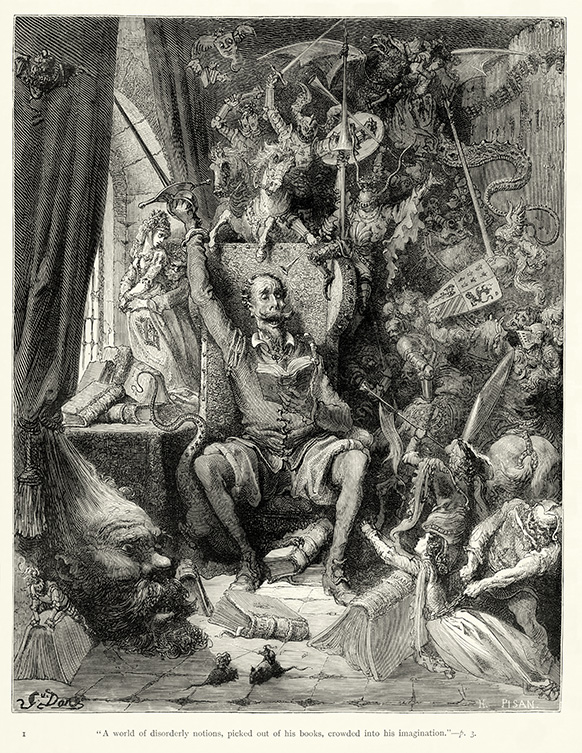Gustave Doré’s (1832 – 1883) long career began at an early age, when at only 15 years, he became a caricaturist for the French paper Le journal pour rire. This was followed with several text comics including Les Travaux d’Hercule (1847), Trois artistes incompris et mécontents (1851), Les Dés-agréments d’un voyage d’agrément (1851) and L’Histoire de la Sainte Russie (1854). During the 1860s, Doré was commissioned to create over two hundred engraved illustrations for Miguel de Cervantes’ Don Quixote. Doré’s detailed depictions of the humorous characters, elaborate landscapes, and historically accurate costumes continue to influence film adaptations, theater productions, and artists to this day. Around this time, Doré completed a series of wood engravings for an illustrated Bible. Volumes were published simultaneously in France and the UK. Additionally, Doré’s work would be featured in Coleridge’s Rime of the Ancient Mariner, Milton’s Paradise Lost, Tennyson’s Idylls of the King, The Works of Thomas Hood, and The Divine Comedy, as well as the book London: A Pilgrimage.
Image credit:
Gustave Doré
“A world of disorderly notions, picked out of his books, crowded into his imagination”.
Miguel de Cervantes, Don Quixote de la Mancha,
Part 1, Chapter 1, Plate 1, 1863.
Wood-engraving.

